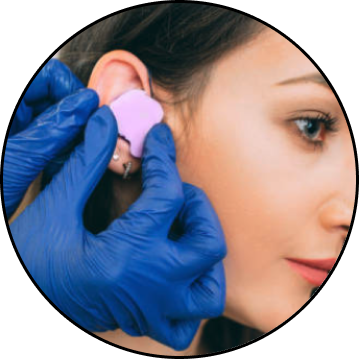Are you suffering from exostoses, also known as “surfer’s ear”? If you are experiencing uncomfortable symptoms from this condition, treatment is available. Winter is the perfect time to explore your treatment options since you are less likely to be surfing or swimming during this time of the year.
What are Exostoses?
Exostoses are bony growths that develop in the ear canal, sometimes blocking the ear canal and leading to various complications. Exostoses are a result of frequent exposure to wind and cold water, which is why it is commonly seen in swimmers and surfers that spend significant time in cold water conditions. In fact, the Department of Otolaryngology at the University of California, Irvine, School of Medicine, estimates cold water surfers are six times more likely to develop exostoses than warm water surfers.
Symptoms of Exostoses
Because exostoses tend to develop and grow over a period of time, it is not unusual to have these bony growths for many years before experiencing any noticeable symptoms. As the ear canal narrows, pain, hearing loss and tinnitus (ringing in the ears) can appear. Patients may experience frequent ear infections as well, as water and debris become trapped inside the narrow canal behind the exostoses. The average age for patients to experience symptomatic exostoses is 30-40, but even younger patients can develop the problem if they are frequently in cold water.
Possible Complications
Symptoms of exostoses, such as hearing loss, can become chronic and impact the patient’s quality of life. Infections are also harder to treat, due to the blockage inside the ear canal. Because exostoses do not reverse on their own, advanced cases may require surgery to remove the excess bone and re-open the ear canal. The good news is treatment can often restore hearing and reduce the incidence of infections.
Treatment Options
Surgery is the only treatment for advanced cases of exostoses. Dr Jason Roth performs exostoses surgery using an incision in the back of the ear and a high-speed drill to break up the excess bone. Patients are typically back to work and regular activities within 1-2 weeks. However, the ear canal must be kept dry for as long as eight weeks to allow for full healing of the ear canal.
Because patients must stay out of the water for a number of weeks following exostoses surgery, many opt to have the procedure during the colder months of the year. If you would like to learn more about what is involved in this surgery, contact our office.
